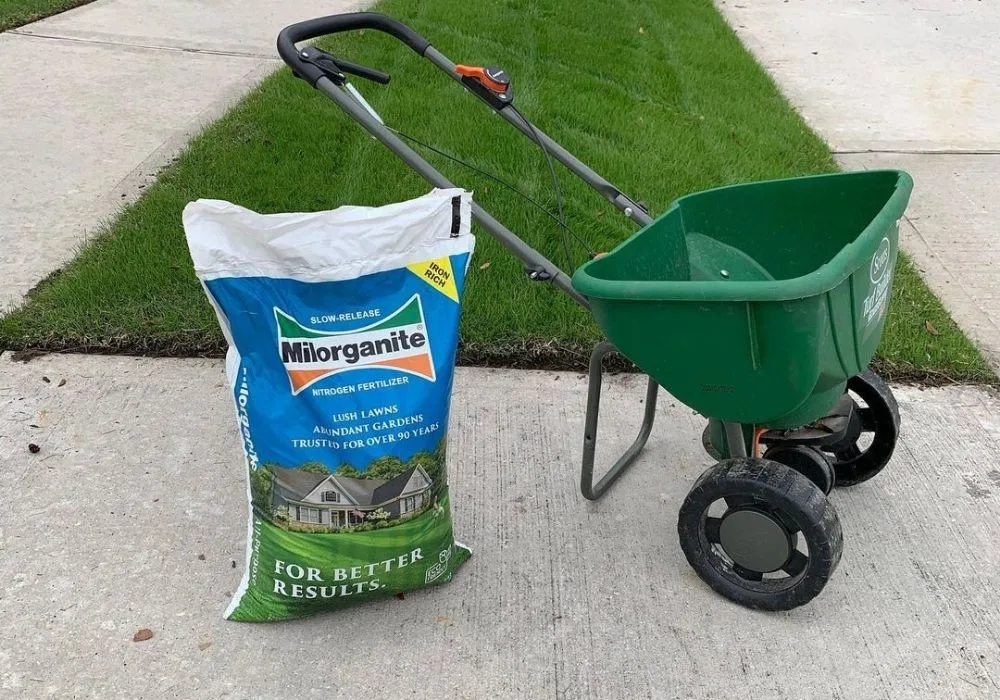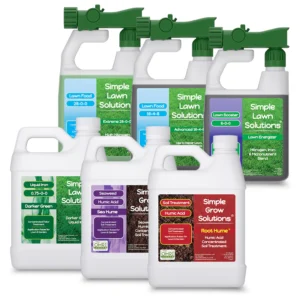What is Spoon-Feeding Fertilization
Spoon-feeding fertilization is the best lawn feeding method for keeping your grass healthy and green year-round. This method involves applying smaller, more frequent doses of fertilizer rather than dumping large amounts all at once. Think of it like eating balanced meals throughout the day instead of binge-eating. Your lawn gets a steady supply of nutrients, promoting strong roots and lush growth while preventing overfeeding or waste.
Why Homeowners Should Use Spoon-Feeding
If you want a lush, healthy lawn with deep roots and fewer problems, spoon-feeding is the way to go. This method ensures that your grass gets exactly what it needs when it needs it, preventing common issues like nutrient runoff, fertilizer burn, and excessive growth spurts that require extra mowing.
Pros of Spoon-Feeding Fertilization
-
Steady Nutrient Supply: Smaller, consistent applications (e.g., applying approximately 0.25–0.5 pounds of nitrogen per 1,000 square feet every 4–6 weeks) result in healthier, uniform growth and stronger, deeper root systems.
-
Reduced Waste: Frequent, lighter applications significantly reduce nutrient runoff, ensuring more fertilizer remains available to your grass, especially during heavy rains.
-
Improved Nutrient Absorption: Spoon-feeding uses lower concentrations that lawns can more readily absorb, minimizing nutrient loss and promoting more efficient use of fertilizers.
-
Reduced Lawn Stress: By avoiding large nutrient fluctuations, spoon-feeding prevents rapid growth spurts that can weaken grass and make it vulnerable to stress and drought.
-
Natural Pest and Disease Resistance: Consistent nutrient availability strengthens turfgrass health, improving its natural defenses against common pests and lawn diseases.
-
Environmental Benefits: By minimizing runoff, spoon-feeding reduces environmental contamination, helping to protect local waterways and ecosystems from harmful excess nutrients (e.g., phosphorus and nitrogen).
Cons of Spoon-Feeding Fertilization
-
Increased Frequency: Requires applications approximately every 4–6 weeks, more often than traditional fertilization schedules.
-
Attention to Schedule: Staying on a consistent schedule is crucial. Missed applications can disrupt nutrient availability and impact overall lawn health.
-
Upfront Cost: High-quality slow-release fertilizers or liquid formulations typically have a slightly higher upfront cost. However, they often deliver superior long-term results, ultimately making them more cost-effective over time.
Conventional Fertilization | The Old-School Way
Conventional fertilization means applying larger amounts of nutrients fewer times per year, usually in spring, summer, and fall. This method gives quick results but isn’t always best for long-term lawn health.
Pros of Conventional Fertilization
-
Fewer Applications: Only needs 2–4 treatments per year, making it convenient for busy homeowners.
-
Lower Initial Cost: Often cheaper upfront because you can buy fertilizer in bulk at lower prices.
-
Quick Green-Up: Your lawn quickly turns green and lush shortly after application—great for special events or seasonal improvements.
Cons of Conventional Fertilization
-
Nutrient Peaks and Crashes: Big, infrequent doses cause rapid growth followed by nutrient shortages, stressing your lawn and making it look uneven.
-
Environmental Impact: Excess fertilizer can wash away during rains, polluting local waterways with nitrogen and phosphorus.
-
Fertilizer Burn Risk: High concentrations can easily damage grass, leading to brown spots or dead patches that require repairs.
-
Weak Root Systems: Rapid growth leads to shallow, weaker roots, making your grass more vulnerable to drought, disease, and pests.
-
Higher Long-Term Costs: While cheaper upfront, constant repairs and nutrient corrections can become more expensive over time compared to consistent spoon-feeding.
How to Start Spoon-Feeding Your Lawn
-
Choose the Right Fertilizer:
Pick a good-quality granular or liquid fertilizer. Look for balanced numbers on the label like 16-4-8 or 20-5-10. Apply every 4–6 weeks. Fertilizers with added organic ingredients like sea kelp or humic acid can boost soil health. -
Apply Smaller Amounts Often:
Instead of one big feeding, split your seasonal fertilizer amount into smaller doses (about ½ pound of nitrogen per 1,000 sq. ft. each time). This keeps nutrients steady and avoids waste. -
Water Lightly After Applying:
Water your lawn lightly right after fertilizing—just enough to wet the soil (about ¼ inch). Avoid heavy watering, which can wash nutrients away. -
Use the Right Tools:
For granular fertilizers, use a broadcast or drop spreader. For liquid fertilizers, use a hose-end or backpack sprayer. The correct tools help spread nutrients evenly and protect your lawn from damage. -
Stick to a Regular Schedule:
Aim to fertilize consistently every 4–6 weeks during your grass’s growing season (typically spring through fall). Staying regular ensures your lawn stays healthy, green, and strong.
Best Fertilizer for Spoon-Feeding
If you’re looking for an easy, effective way to spoon-feed your lawn, check out our friends over at Simple Lawn Solutions. They offer a range of premium liquid fertilizers, including one of my personal favorite combos—the 16-4-8 Balanced Liquid Fertilizer paired with their Sea Hume Combo. This duo provides essential nitrogen, phosphorus, and potassium while improving soil health with organic compounds like sea kelp and humic acid. Their products are easy to apply, work quickly, and help your lawn stay green, lush, and resilient throughout the season. Plus, you can use code EVERGREEN5 at checkout for a discount.
Regardless of which product you choose to use, look for fertilizers that offer quality. Cheap products can contain a lot of salts and damage your lawn over time! For more guidance on choosing between liquid and granular fertilizers, keep an eye out for our upcoming deep dive on Liquid Fertilizers vs. Granular Fertilizers—which one is best for your lawn?
Not sure which option is right for you? We can take care of it for you! Our fertilization services ensure your lawn gets the right nutrients at the right time, whether you prefer a liquid spoon-feeding approach or a slow-release granular application. Let us handle the schedule, the application, and the results—so you can just sit back and enjoy a healthier, greener lawn.
Common Mistakes to Avoid When Spoon-Feeding Fertilizer
Even with good intentions, homeowners sometimes make mistakes with spoon-feeding. Here’s what to avoid for best results:
-
Applying Too Much at Once: Spoon-feeding works best when you apply nutrients in small, steady amounts. Using too much at once stresses your grass and defeats the purpose.
-
Skipping Applications: Staying consistent matters. Missing multiple feedings means your lawn won’t fully benefit from the spoon-feeding method.
-
Choosing the Wrong Fertilizer: Avoid cheap, high-salt fertilizers. They can harm your lawn over time. Choose quality products designed for frequent, smaller applications.
-
Incorrect Watering: Fertilizer needs a bit of water to soak into the soil. Lightly watering right after fertilizing helps nutrients reach grass roots effectively.
-
Ignoring Soil Health: Good grass starts with healthy soil. Test your soil occasionally and use compost or products like humic acid to keep it in good shape. For deeper soil improvements, consider topdressing to boost nutrient absorption and strong roots.
If you’re aiming for a polished look along with proper feeding, combining spoon-feeding with professional mowing ensures your lawn stays at the ideal height for health and appearance.
Final Thoughts | Spoon-Feeding Wins
While conventional fertilization may seem easier, spoon-feeding is the best way to maintain a thick, green, healthy lawn year-round. It keeps your grass strong, reduces waste, and prevents common lawn problems caused by nutrient overload. Yes, it takes a bit more effort, but the results are well worth it!
If you’re ready to take your lawn care to the next level, consider switching to spoon-feeding—it’s like putting your grass on a steady, nutritious diet instead of a rollercoaster of feast and famine. And if you’d rather let the pros handle it, reach out to us—we’ll make sure your lawn is fed properly and looking its best all year long!






